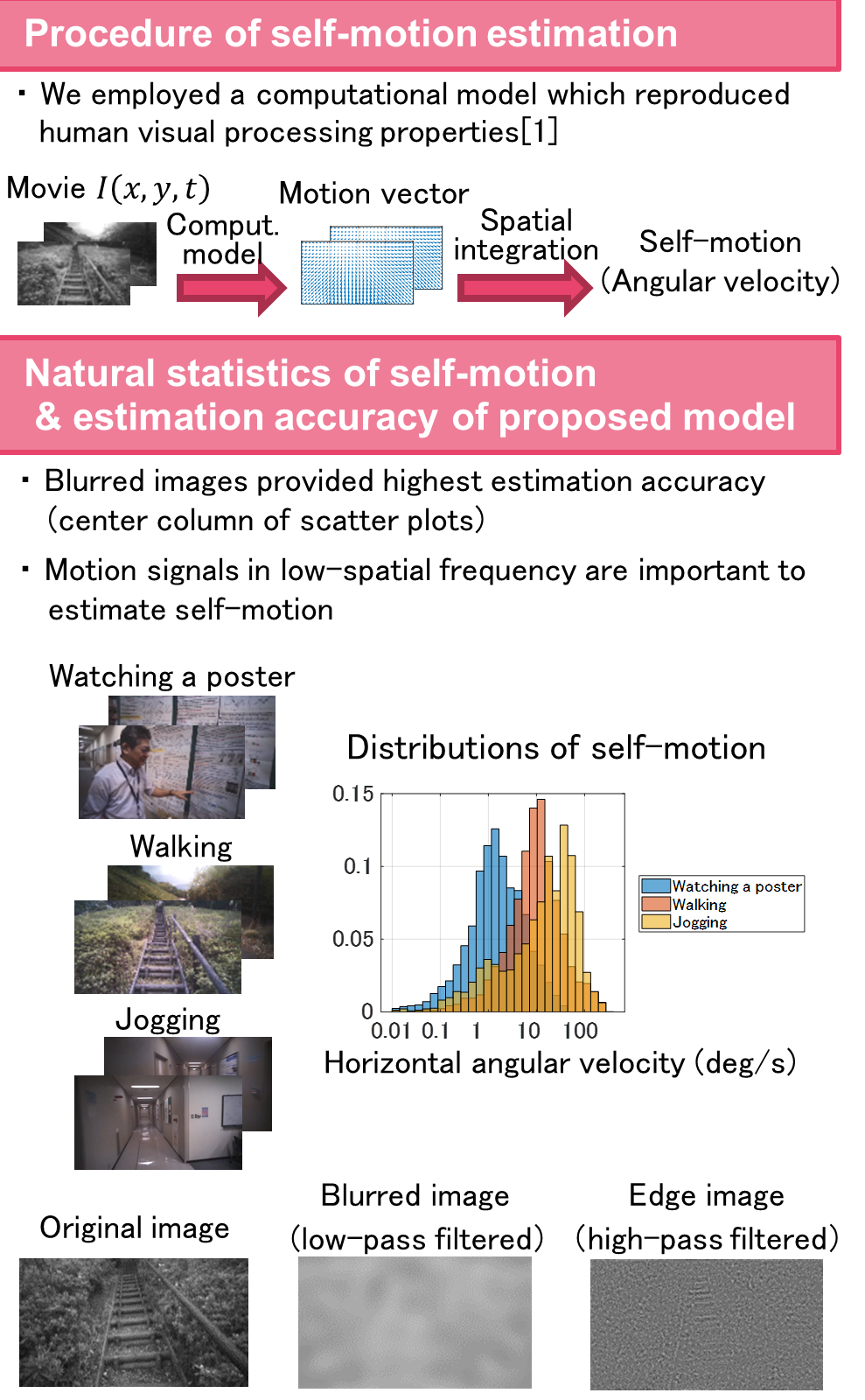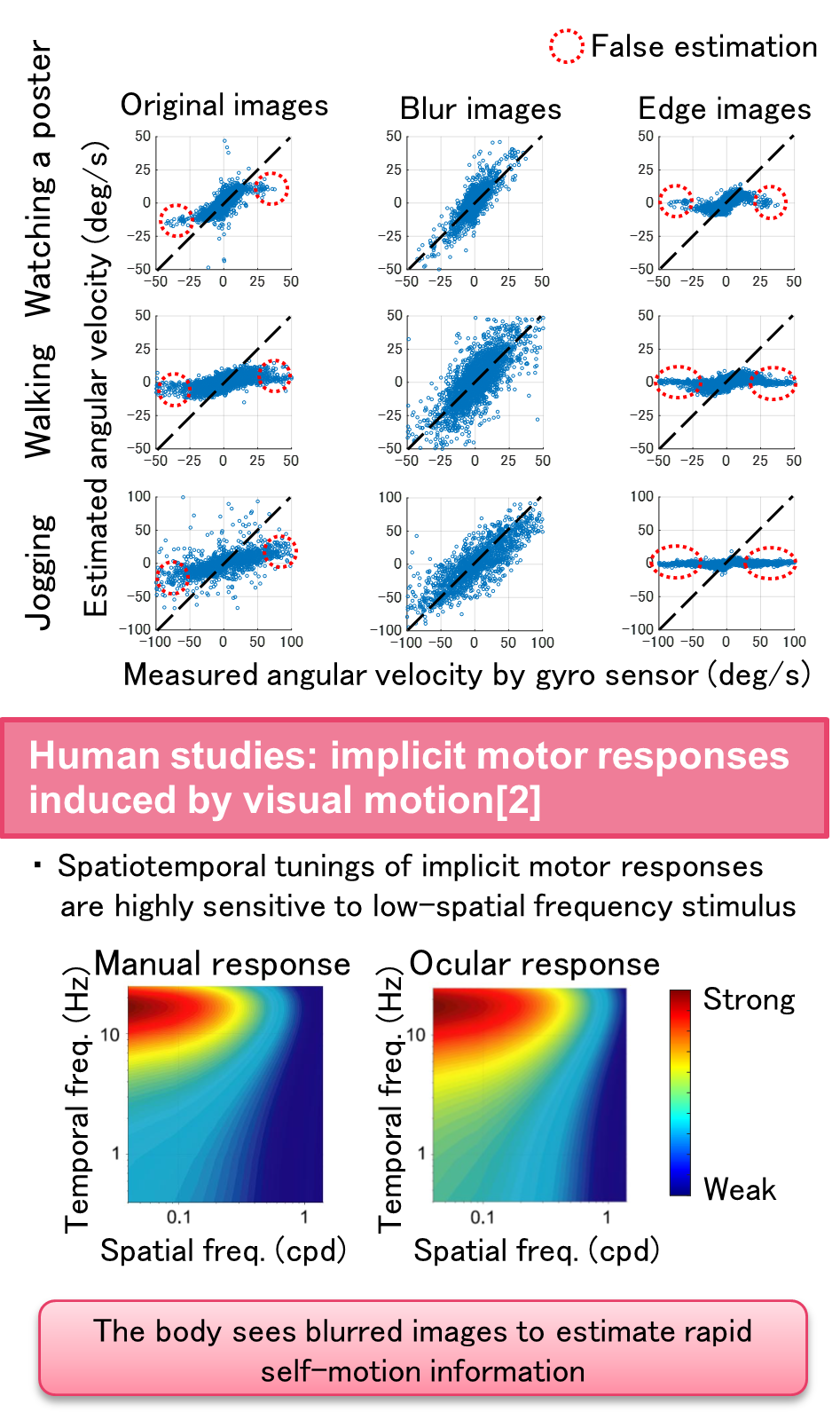Exhibition Program
Science of Human
29
Real-world motion that the body sees
- Distinct visuomotor control revealed by natural statistics -
Abstract
Visual motion has critical roles for quickly adjusting posture, eyes, and limbs in dynamic interactions with
environments. By behavioral experiments and synthetic model simulations, we have tried to reveal fundamental
mechanisms of implicit visuomotor processing. It is difficult to retrieve detailed information about the scene from
highly blurred image. However, we found that blurred image sequence can provide higher estimation accuracy of
rapid self-motion than the original image sequence. Interestingly, implicit motor responses of hands and eyes are
highly sensitive for low-spatial frequency stimuli. These results suggest that the brain knows the importance of
low-spatial frequency component to code the high-speed self-motion from the statistical relationship between
visual motion and head/posture fluctuation. This type of visuomotor control would be helpful to realize a novel
visual processing for moving robot.
References
- [1] 中村大樹, 佐藤俊治, “計算論的に最適な速度推定器によってMT野細胞の複雑な反応特性を説明する,” in 第27回日本神経回路学会全国大会, 2017.
- [2] H. Gomi, N. Abekawa, S. Nishida, “Spatiotemporal tuning of rapid interactions between visual-motion analysis and reaching movement,” The Journal of Neuroscience, vol. 26, No. 20, pp. 5301-5308, 2006.
- [3] D. Nakamura, H. Gomi, “Statistical analysis of optic flow induced by body motion characterizing OFR and MFR,” in JNNS satellite meeting, 2018.
Poster
Photos


Contact
Daiki Nakamura, Sensory and Motor Research Group, Human Information Science Laboratory
Email:
Email:






